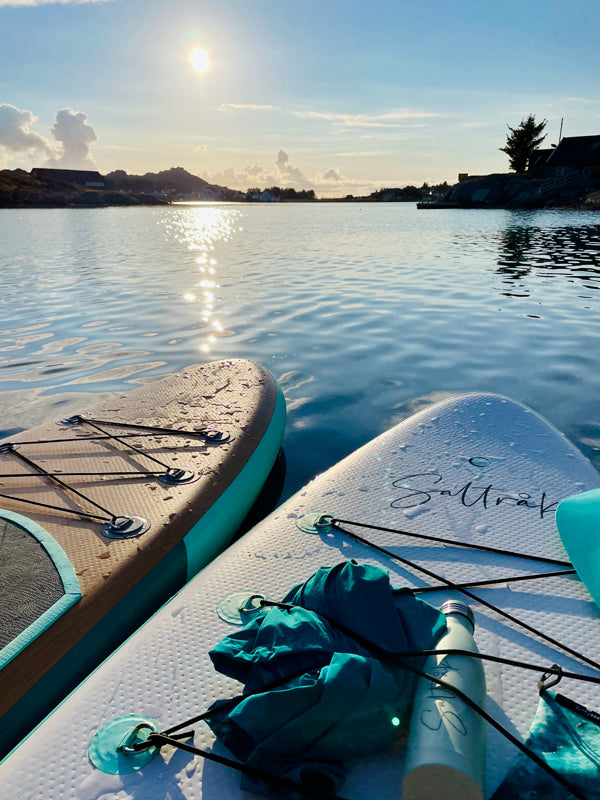EVERYTHING YOU NEED TO KNOW ABOUT SUP
SUP or stand up paddle is the world's fastest growing water sport, and has gained enormous popularity in recent years.
Why? SUP is a fun way to be close to nature, with the added benefits of full core exercise, meditation and socialization. SUP is a low-threshold activity with wide versatility, making it a sport that everyone can enjoy, regardless of skill level, where you are or what type of paddling you want to do.
There are two main types of SUP boards:
- Hard SUP boards are rigid and are made of composite materials. Hard plates provide good performance and improved stability, but they take up a lot of space and must be transported by car on a roof rack and stored in a garage or wall rack. In many cases, these trays require a much more gentle treatment.
- Inflatable SUP boards (also called iSUP) are a perfect option if storage space is limited or transport has size restrictions. Although not as hard boards, iSUPs are surprisingly stiff when fully inflated and are an incredibly practical option for getting out on the water.

Inflatable boards have undoubtedly become the best seller in recent years. The fact that they are inflatable means that the board can be easily stored and transported (easily in the car or in the bag) to the nearest water, without the need for a roof rack or a large garage. The inflatable boards gain their stiffness as they are inflated. As air fills the chambers and the board expands, the top and bottom of the board pull against each other via thousands of individual threads (known as drop stitch) woven into the interior. This complex weave gives the boards strength and stiffness, as well as keeping them very light. Since the boards are strong, sturdy and easy to store, more and more people have been able to enjoy paddleboarding.
Different brands of SUP will naturally often have different production and construction. Saltråk SUP has two layers of PVC (double layer) - this makes the board stiffer and stronger than boards with a single layer of PVC. The construction is often reflected in the price, as a SUP with a double layer has a more expensive production.
The advantage of double layer PVC is, among other things, that more of your energy from each stroke is transferred to forward movement and not bending the board. A board with a single layer of PVC can often be seen to take on a "banana shape", where the center of the board slopes downwards while the front and back end curve upwards.
A double layer SUP board will be heavier than the cheaper single layer boards. These boards will weigh less since a smaller amount of PVC is used to produce them, they will flex more, are extra fragile and it is even more important to pump it up to the manufacturer's recommended pressure.


